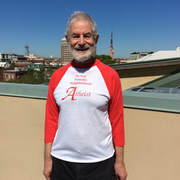Although the 19th-century mathematician Gauss crowned mathematics the “queen of the sciences” because mathematics is essential in the study of all scientific fields, an argument can be made that mathematics is not really a science. Science is empirical, meaning based on observations of nature, and it is potentially falsifiable by new observations of nature. In other words, new evidence can lead us to revise scientific theories, so scientific ideas can never be proved absolutely.Some mathematical ideas, on the other hand, can be absolutely proved.
For a mathematical statement to be accepted as a theorem, its conclusion must be known to always be true whenever its hypotheses are satisfied. Mathematicians accept that a conclusion must be true based on a proof rather than empirical evidence. The Pythagorean Theorem, for example, can be proved.
For a mathematical statement to be accepted as a theorem, its conclusion must be known to always be true whenever its hypotheses are satisfied. Mathematicians accept that a conclusion must be true based on a proof rather than empirical evidence. The Pythagorean Theorem, for example, can be proved.
Since mathematics provides the language in which the natural sciences try to describe and analyze the universe, there is a natural link between mathematics and the natural sciences. The natural sciences investigate the physical universe but mathematics does not, so in that sense, too, mathematics is not a natural science. Science is testable because it usually deals with real world phenomena, while mathematics can be quite abstract, and its validity need not have anything to do with the real world. While mathematics may not be a science, mathematics is the language that science speaks in.
To complicate things, though, a case might be made that at least some mathematics can be called science. We roughly classify mathematics as either pure(or theoretical) and applied. Pure mathematics is studied primarily for its own sake, while applied mathematics is the application of mathematical methods to specific fields including science, engineering, business, computer science, and industry. Pure mathematicians prove theorems that have no apparent and clear application, though many such theorems proved by pure mathematicians have later become useful in the real world. The search for practical applications also motivates the development of mathematical theories, which then become the subject of study of abstract concepts in pure mathematics. So activity in applied mathematics may be intimately connected to research in pure mathematics. There is a lot of gray area between pure and applied mathematics.
Some mathematics might be viewed as a bridge between art and science. The famous mathematician G. H. Hardy said, “There is no permanent place in the world for ugly mathematics.” Mathematicians are often guided by aesthetics, and look for beauty in their proofs. Proofs and methods are routinely referred to as elegant.
Mathematics and science have had a long and close relationship. Mathematics is the universal language and indispensable source of intellectual tools for science. On the other hand, science has inspired and stimulated mathematics, posing new questions, and bringing new ways of thinking. Science and mathematics have certainly been good for one another.
Since mathematics provides the language in which the natural sciences try to describe and analyze the universe, there is a natural link between mathematics and the natural sciences. The natural sciences investigate the physical universe but mathematics does not, so in that sense, too, mathematics is not a natural science. Science is testable because it usually deals with real world phenomena, while mathematics can be quite abstract, and its validity need not have anything to do with the real world. While mathematics may not be a science, mathematics is the language that science speaks in.
To complicate things, though, a case might be made that at least some mathematics can be called science. We roughly classify mathematics as either pure(or theoretical) and applied. Pure mathematics is studied primarily for its own sake, while applied mathematics is the application of mathematical methods to specific fields including science, engineering, business, computer science, and industry. Pure mathematicians prove theorems that have no apparent and clear application, though many such theorems proved by pure mathematicians have later become useful in the real world. The search for practical applications also motivates the development of mathematical theories, which then become the subject of study of abstract concepts in pure mathematics. So activity in applied mathematics may be intimately connected to research in pure mathematics. There is a lot of gray area between pure and applied mathematics.
Some mathematics might be viewed as a bridge between art and science. The famous mathematician G. H. Hardy said, “There is no permanent place in the world for ugly mathematics.” Mathematicians are often guided by aesthetics, and look for beauty in their proofs. Proofs and methods are routinely referred to as elegant.
Mathematics and science have had a long and close relationship. Mathematics is the universal language and indispensable source of intellectual tools for science. On the other hand, science has inspired and stimulated mathematics, posing new questions, and bringing new ways of thinking. Science and mathematics have certainly been good for one another.

